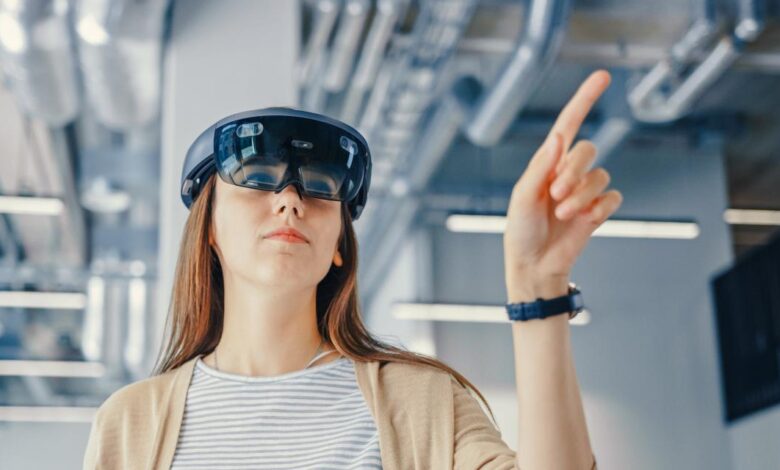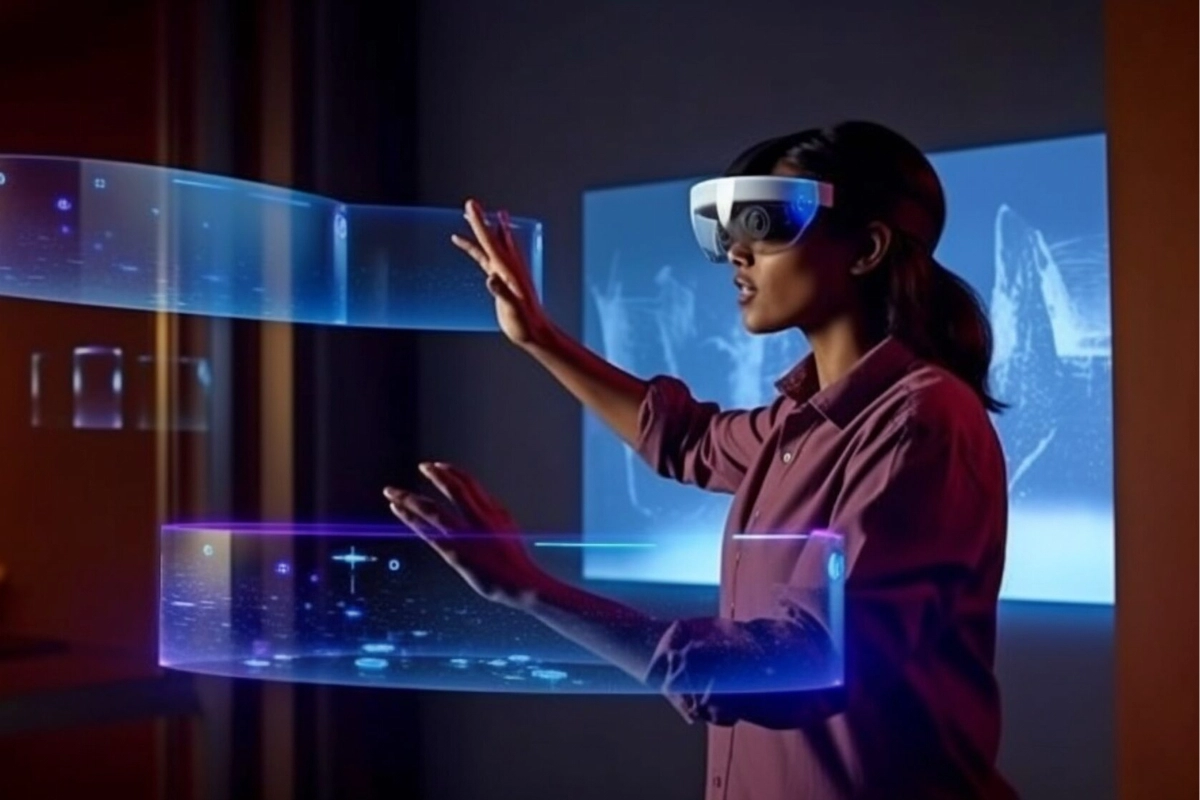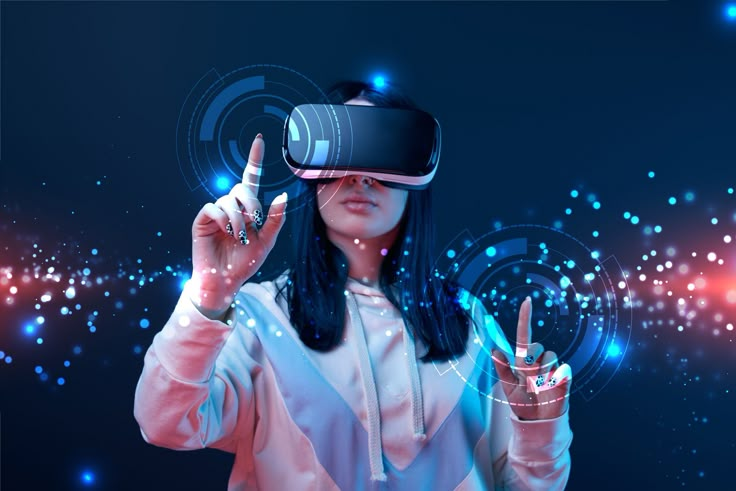The Mainstream Push of AR/VR Creates Hardware Revolution

The world of Augmented Reality (AR) and Virtual Reality (VR) is on the cusp of a major transformation, poised to move beyond a niche market for gamers and tech enthusiasts into a mainstream technology that will reshape how we work, learn, and connect. For years, AR and VR were seen as futuristic concepts, but a confluence of technological breakthroughs, a reduction in hardware costs, and a growing demand for immersive experiences is driving them toward mass adoption. This isn’t just a slow, incremental shift; it’s a rapid acceleration that promises to make immersive digital experiences a part of our daily lives. This article will take a deep dive into the key drivers behind AR/VR’s mainstream takeover, exploring the pivotal role of hardware evolution, the killer applications beyond gaming, the challenges that still need to be addressed, and the immense opportunities that lie ahead for a more immersive and interconnected future.
The Gateway to the Metaverse

The single biggest factor driving the mainstream adoption of AR and VR is the evolution of the hardware itself. The early days were defined by expensive, bulky headsets tethered to powerful computers. The new era is characterized by devices that are more affordable, accessible, and comfortable.
A. The Rise of Standalone Headsets
The introduction of standalone VR headsets has been a game-changer. These devices, which contain all the necessary computing power and tracking systems within the headset itself, have eliminated the need for a high-end PC and complex external sensors. This has dramatically reduced the cost and friction of getting into VR, making it accessible to a much wider audience. The next generation of these devices will be even lighter, more powerful, and feature high-resolution displays that reduce the “screen-door effect,” making the virtual world feel more real.
B. The Promise of AR Glasses
While VR immerses you in a virtual world, Augmented Reality (AR) overlays digital information onto the physical world. The long-term vision for AR is a pair of sleek, stylish glasses that can display everything from a map to a text message directly in your field of view. The technological hurdles are significant, but as batteries and components get smaller, more efficient, and more powerful, this vision is inching closer to reality. These glasses will be the ultimate gateway to a world where digital and physical realities are seamlessly intertwined.
C. The Power of Mobile AR
Before dedicated AR glasses become mainstream, smartphones are acting as the primary entry point for AR experiences. Most modern smartphones have the necessary cameras and sensors to run sophisticated AR applications. This has already brought AR into the hands of billions of people through apps like Snapchat filters, Pokémon Go, and virtual try-on features for clothing and makeup. This ubiquity is building a foundation of user familiarity and comfort with AR technology, paving the way for more immersive experiences in the future.
The Killer Applications
While gaming has been a primary driver of AR/VR adoption, the most significant impact will be in its applications across a wide range of industries. These “killer apps” will be the reason why a person who isn’t a gamer decides to buy an AR or VR device.
A. The Future of Work and Enterprise
The metaverse is not just for socializing; it is a new frontier for work, collaboration, and productivity.
- Virtual Collaboration: Companies are creating virtual offices and meeting rooms where employees from around the world can meet as avatars, providing a sense of presence and spontaneous interaction that video calls often lack. Teams can collaborate on 3D models, brainstorm on a shared virtual whiteboard, and hold meetings in a way that feels more natural and engaging.
- Training and Simulation: AR and VR are revolutionizing corporate training. Surgeons can practice complex procedures on a virtual patient, engineers can repair a digital twin of a complex machine, and factory workers can learn to operate new equipment in a safe, risk-free environment. This reduces costs and increases the effectiveness of training.
- Data Visualization: AR can be used to visualize complex data in the physical world. For example, a doctor could see a patient’s vital signs overlaid on their body, or an engineer could see real-time performance data on a piece of machinery.
B. The New Era of Education
The potential for AR and VR to transform education is immense, making learning more immersive, interactive, and accessible.
- Immersive Learning: A student can take a virtual field trip to ancient Rome, walk on the surface of Mars, or explore the human body at a cellular level. This makes abstract concepts tangible and helps students learn through experience rather than just rote memorization.
- Skill-Based Training: Vocational students can practice hands-on skills in a virtual environment, from welding to auto repair. This allows them to make mistakes without consequence and gain a level of proficiency that would be difficult to achieve in a traditional classroom setting.
- Distance Learning: AR/VR can help bridge the gap in distance learning, creating a more engaging and connected classroom environment where students and teachers feel a sense of shared presence.
C. Retail and Commerce
The retail industry is using AR and VR to create a more engaging and personalized shopping experience that blends the digital and physical worlds.
- Virtual Try-On: Customers can use their smartphone’s camera to “try on” makeup, clothing, or even furniture in their own home, helping them to make more confident purchasing decisions.
- Immersive Showrooms: A customer can use VR to walk through a virtual car dealership and inspect a car from every angle, or tour a new home before it is built.
- Digital-Physical Integration: AR is being used to provide customers with more information about a product in a physical store. For example, a customer could point their phone at a bottle of wine and see tasting notes, reviews, and pairing recommendations pop up on their screen.
Challenges and Opportunities

Despite the incredible progress, the journey to mainstream AR/VR adoption is not without its significant challenges.
A. The Hardware Hurdle
The current generation of VR headsets, while more accessible, can still be bulky, heavy, and cause motion sickness for some users. AR glasses are still in the early stages of development and face significant hurdles in battery life, display technology, and processing power. The ultimate goal is to create devices that are as comfortable and stylish as a pair of regular glasses, and as intuitive as a smartphone.
B. Content and Ecosystem Development
A technology is only as good as the content and applications that run on it. For AR and VR to go mainstream, there needs to be a continuous stream of compelling, high-quality content that goes beyond gaming and entertainment. This requires a new generation of developers, designers, and creators who are skilled in building immersive experiences. The challenge is to create an open and interoperable ecosystem that allows for a seamless transition between different platforms and experiences.
C. Ethical and Societal Implications
As AR and VR become a more central part of our lives, they will raise a host of new ethical and societal questions.
- Data Privacy and Surveillance: The devices will collect an unprecedented amount of data about our environment, our interactions, and our biometric information. This raises serious concerns about privacy, security, and potential misuse.
- Digital Divide: A new “digital divide” could emerge between those who have access to this expensive, cutting-edge technology and those who do not.
- Social and Psychological Impact: There is a need for more research on the long-term social and psychological impact of spending a significant amount of time in immersive virtual worlds.
Conclusion
The mainstream adoption of AR and VR is not a matter of if, but when. We are at a critical juncture where the technology has matured, the hardware has become more accessible, and the demand for more immersive digital experiences is growing exponentially. The evolution of standalone VR headsets and the promising development of AR glasses are dismantling the technical barriers that have long confined these technologies to a niche. The true transformative power, however, lies in the “killer applications” that are emerging beyond the gaming world. From revolutionizing how we work and collaborate in virtual offices to making education more interactive and engaging, AR and VR are poised to become indispensable tools in our professional and personal lives. The retail industry is already leveraging these technologies to create more immersive and personalized shopping experiences, blurring the lines between the digital and physical worlds.
However, the journey to mass adoption is not without its significant challenges. The hardware still needs to become more comfortable and intuitive, a feat of engineering that will require continued innovation in materials and battery technology. A compelling and diverse ecosystem of content must be built to justify the investment in these devices, a task that requires a new generation of creative talent. Most importantly, we must proactively address the ethical and societal implications that come with living in a persistent, immersive digital world. Questions of data privacy, accessibility, and the long-term psychological impact are not just technical hurdles; they are fundamental issues that must be addressed through a collaborative effort of developers, policymakers, and society as a whole. The future of the internet is not a flat screen; it is a shared, immersive space that we will inhabit, and how we choose to build it will define the next chapter of human connection and innovation.












